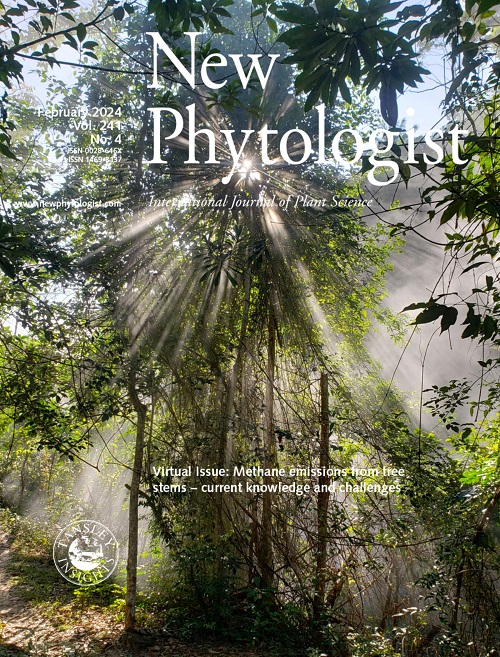PIF3 is phosphorylated by MAPK to modulate plant immunity
IF 8.1
1区 生物学
Q1 Agricultural and Biological Sciences
引用次数: 1
Abstract
- Surface-localized pattern recognition receptors perceive pathogen-associated molecular patterns (PAMPs) to activate pattern-triggered immunity (PTI). Activation of mitogen-activated protein kinases (MAPKs) represents a major PTI response.
- Here, we report that Arabidopsis thaliana PIF3 negatively regulates plant defense gene expression and resistance to Pseudomonas syringae DC3000. PAMPs trigger phosphorylation of PIF3. Further study reveals that PIF3 interacts with and is phosphorylated by MPK3/6.
- By mass spectrometry and site-directed mutagenesis, we identified the corresponding phosphorylation sites which fit for SP motif. We further show that a phospho-mimicking PIF3 variant (PIF36D/pifq) conferred increased susceptibility to P. syringae DC3000 and caused lower levels of defense gene expression in plants.
- Together, this study reveals that PIF3 is phosphorylated by MPK3/6 and phosphorylation of the SP motif residues is required for its negative regulation on plant immunity.
PIF3被MAPK磷酸化以调节植物免疫
表面定位的模式识别受体感知病原体相关的分子模式(PAMPs)来激活模式触发免疫(PTI)。有丝分裂原活化蛋白激酶(MAPKs)的激活代表了一个主要的PTI反应。本文报道拟南芥PIF3负向调控植物防御基因表达和对丁香假单胞菌DC3000的抗性。PAMPs触发PIF3的磷酸化。进一步的研究表明PIF3与MPK3/6相互作用并被MPK3/6磷酸化。通过质谱分析和定点诱变,我们确定了适合SP基序的磷酸化位点。我们进一步发现,PIF3的磷酸化模拟变体(PIF36D/pifq)增加了植物对丁香假单胞菌DC3000的易感性,并导致防御基因表达水平降低。综上所述,本研究表明PIF3被MPK3/6磷酸化,而SP基序残基的磷酸化是其对植物免疫的负调控所必需的。
本文章由计算机程序翻译,如有差异,请以英文原文为准。
求助全文
约1分钟内获得全文
求助全文
来源期刊

New Phytologist
PLANT SCIENCES-
CiteScore
17.60
自引率
5.30%
发文量
728
审稿时长
1 months
期刊介绍:
New Phytologist is a leading publication that showcases exceptional and groundbreaking research in plant science and its practical applications. With a focus on five distinct sections - Physiology & Development, Environment, Interaction, Evolution, and Transformative Plant Biotechnology - the journal covers a wide array of topics ranging from cellular processes to the impact of global environmental changes. We encourage the use of interdisciplinary approaches, and our content is structured to reflect this. Our journal acknowledges the diverse techniques employed in plant science, including molecular and cell biology, functional genomics, modeling, and system-based approaches, across various subfields.
 求助内容:
求助内容: 应助结果提醒方式:
应助结果提醒方式:


